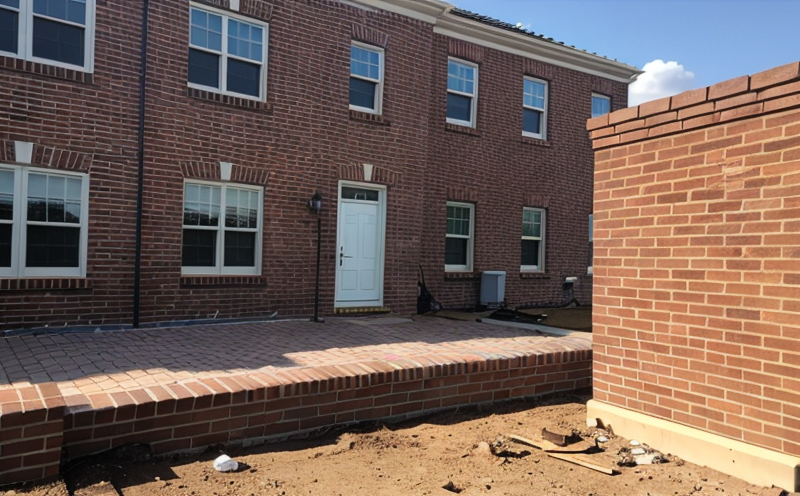EN 1015 Workability and Strength Assessment
The EN 1015 standard is a critical tool in the building and infrastructure testing sector, particularly for masonry and brick materials. This European standard provides detailed guidelines for assessing the workability and strength of concrete-based mortars and grouts used in construction. Workability, or consistency, refers to how easily mortar can be spread and shaped during application, while strength is a measure of its resistance to compression forces.
Understanding these properties is essential because they directly impact the durability and performance of masonry structures. Poor workability leads to inconsistent coverage and finishing quality, which in turn affects the overall integrity of the construction. Conversely, insufficient strength can compromise the structural stability under load. Both characteristics are paramount for ensuring high-quality building infrastructure.
EN 1015 complements other standards such as ISO 6789 or ASTM C231 by offering specific methodologies and acceptance criteria tailored to the European market. This ensures that all parties involved in construction—whether they be suppliers, contractors, or regulatory bodies—are working with consistent and reliable data.
The test procedure outlined in EN 1015 involves several steps aimed at accurately measuring both workability and strength parameters. For workability assessment, the slump flow method is commonly used to evaluate how freely mortar flows when disturbed by a trowel. The strength component typically employs compression testing where cylindrical specimens are subjected to gradually increasing loads until failure.
Real-world applications of this test include quality assurance during manufacturing processes, on-site verification before application, and performance evaluation post-installation. Ensuring adherence to EN 1015 helps maintain consistent product quality across different projects and regions within the European Union.
Scope and Methodology
| Parameter | Description |
|---|---|
| Workability Assessment | This involves determining the consistency of the mortar using slump flow tests. During this process, a specific amount of water and cementitious materials are mixed according to prescribed ratios. The mixture is then placed into a container where its flow behavior is observed. |
| Strength Testing | The compressive strength of mortar samples is evaluated by preparing cylindrical specimens which are cured under controlled conditions before being subjected to increasing compression until failure. This provides an indication of the material's resistance to deformation and crushing. |
Why Choose This Test
The EN 1015 workability and strength assessment is indispensable for ensuring compliance with European construction standards. By adhering to this test protocol, builders can demonstrate their commitment to quality control throughout the supply chain. It also facilitates smoother communication between various stakeholders involved in project execution.
For manufacturers, it offers valuable insights into how changes in raw materials or production methods affect final product characteristics. On-site workers benefit from knowing exactly what standards they need to meet when preparing and applying mortars. Regulatory bodies gain confidence that projects comply with relevant regulations if these tests are conducted correctly.
In terms of environmental considerations, accurate assessment ensures that only suitable products are used which can help reduce waste and improve resource efficiency in construction processes. Additionally, consistent results from EN 1015 testing support long-term sustainability goals by promoting reliable performance over time.
Environmental and Sustainability Contributions
The workability and strength assessment conducted under EN 1015 plays a crucial role in supporting sustainable construction practices. By ensuring that materials meet rigorous testing standards, this process helps minimize the risk of structural failures that could lead to additional resource consumption during repairs or replacements.
Moreover, accurate measurements contribute to more precise planning and execution which can result in reduced material usage without compromising on quality. This efficiency contributes positively towards reducing carbon footprints associated with construction activities. Furthermore, by fostering better understanding among all parties concerned about the importance of proper testing procedures, it encourages adherence to best practices that ultimately enhance overall environmental performance.





